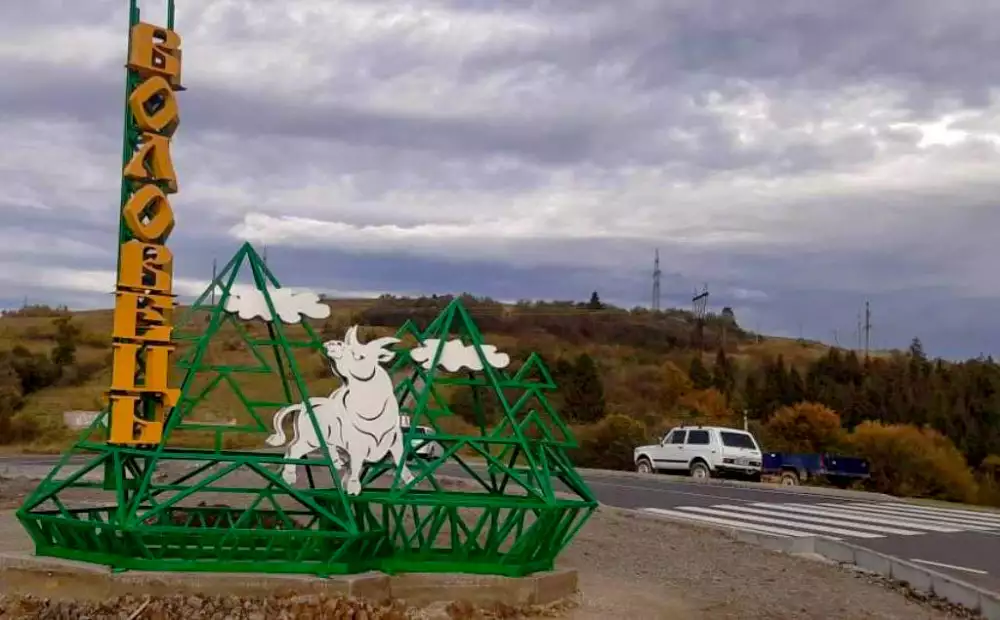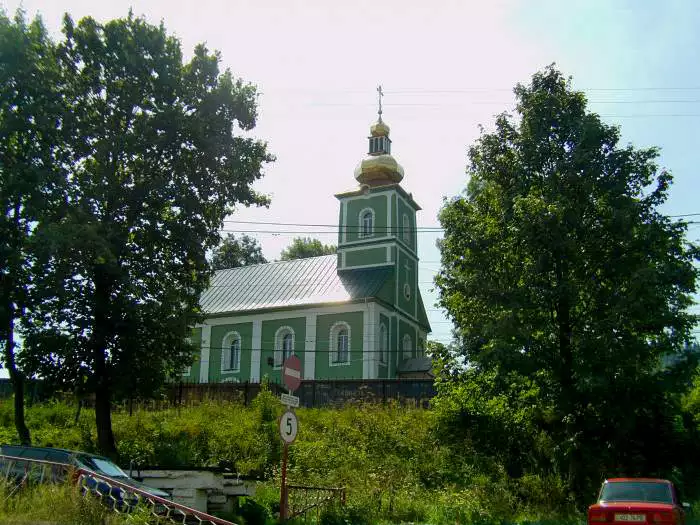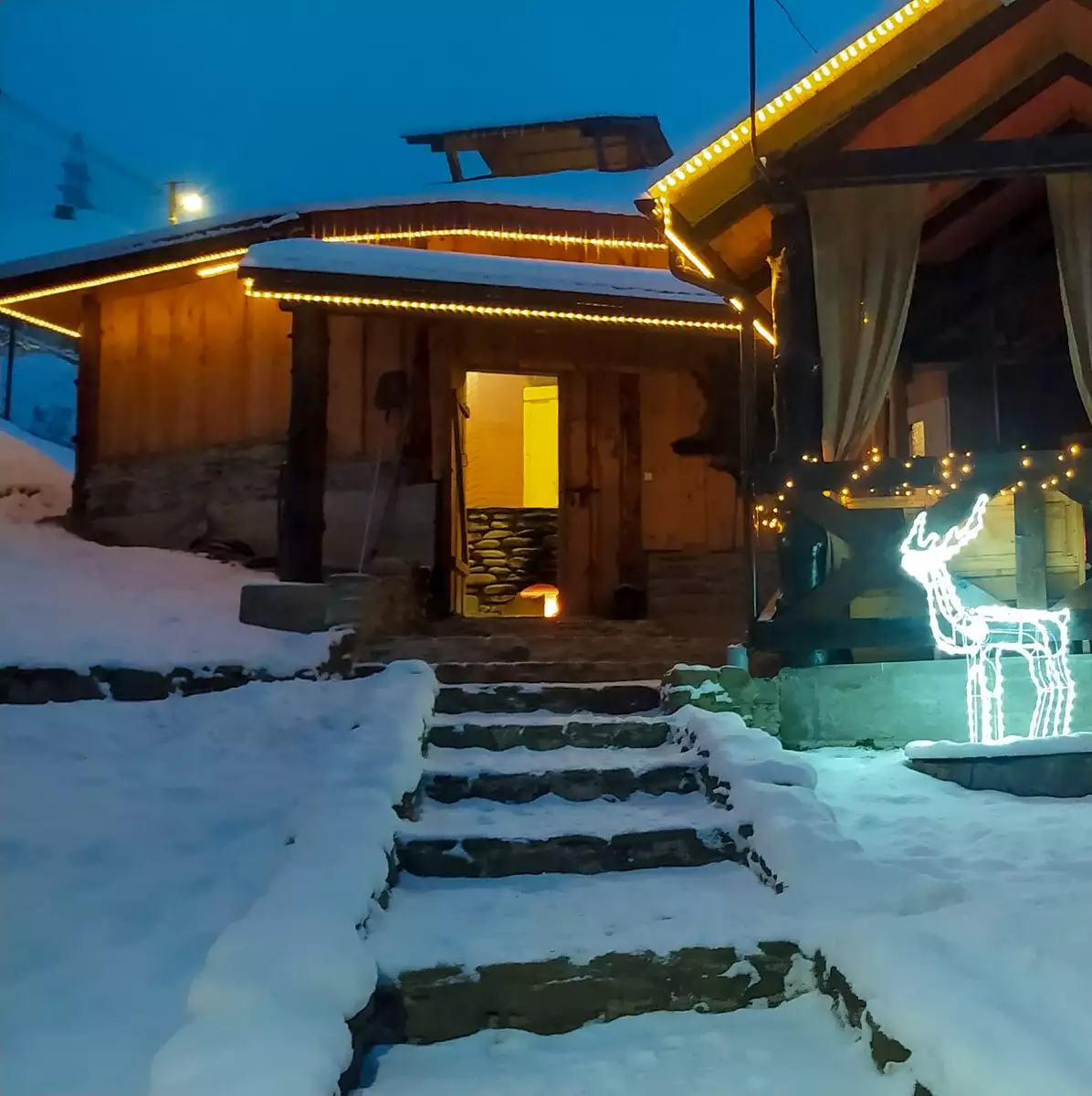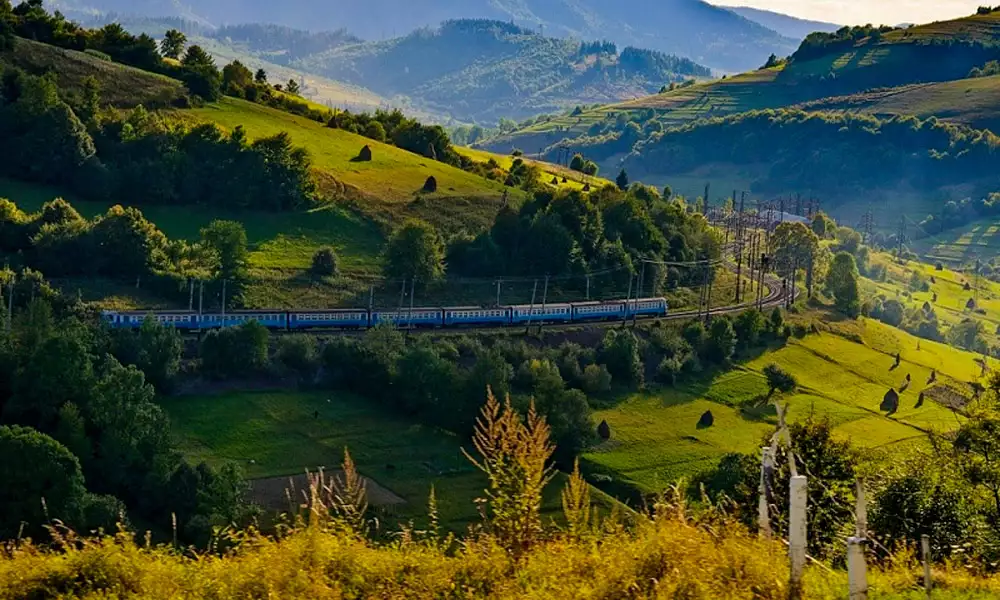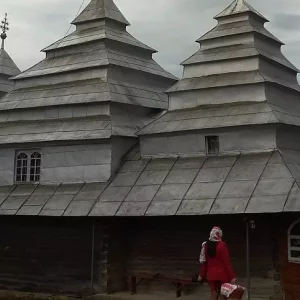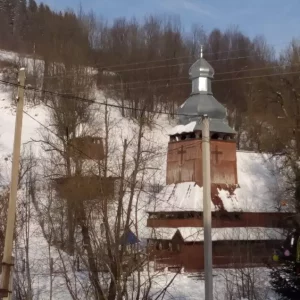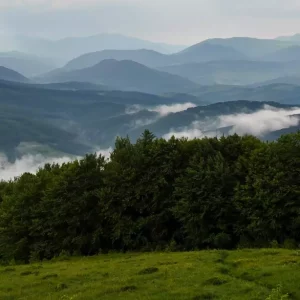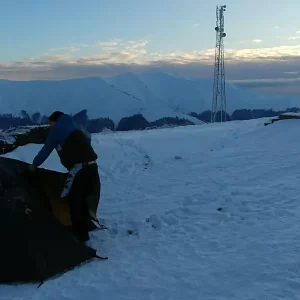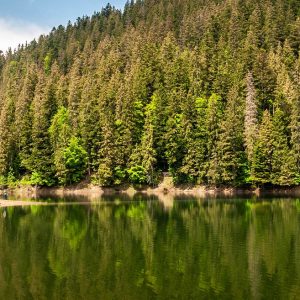According to archaeological findings, the territory of modern Volovets has been inhabited since the Bronze Age. In 1930, a treasure trove of 30 bronze and 9 gold items and a clay scoop dating back to the 13th century BC was found in the Pid Kilytsev tract.
Modern Volovets has its roots in an ancient Slavic settlement in the Carpathians. For the first time in written sources, Volovets (then called Ewkermezew – ox field) is mentioned in a charter of the Leleśske Chapter dated 2 February 1430, when it, along with the surrounding lands, belonged to the feudal lords of Perenia.
There is a legend about the foundation of Volovets. According to it, in ancient times, peasants from the surrounding settlements drove herds of oxen to the valley of the Vycha River. It is thanks to these large domestic animals that the settlement, which arose on the site of a watering hole, was named Volovets. In the first stage of its history, from the 15th to the 19th century, most of Volovets residents were engaged in animal husbandry.
For almost six centuries, the name of the settlement has changed and been recorded in different ways:
- 1430 year – Ewkermezew;
- 1465 – Wkermezew;
- 1543 – Ewkvr mezeo;
- 1546 – Ekermezew;
- 1548 – Evukevr mezeow;
- 1554 – Eokor mező;
- 1564 – Evukewr mewzew;
- 1570 – Ökörmező;
- 1630 – Eőkőr mezeö;
- 1645 – Wolowecz;
- 1773 – Volocz;
- 1808 – Volócz, Wolowec, Volüczi;
- 1873 – Volovec;
- since 1948 – Volovets.
The village passed from one owner to another, and in the early seventeenth century it was included in the Mukachevo dominion. In 1626, the castellan of the Mukachevo castle, Janos Balling, instructed the keniz (a person who settled a village on behalf of the landowner) Semen Oleksa to settle new residents near Volovets. The settlement was called Modorfolvo (Hungarian village). Its inhabitants were indeed Hungarians (Borbiy, Kish, Modior, Makar, Bigor, Beregi). They later became Ukrainianised, and locals can easily guess the names of the current residents of Volovets. The name of the settlement was changed to Magyar, and later it became part of Volovets, which still retains the name Magyarovytsia.
In 1645, under Prince György II Rákóczi, Volovets became part of the Principality of Transylvania. In those distant times, only a few dozen families lived here. Throughout its history, Volovets has repeatedly become the epicentre of battles during wars and uprisings. Thus, in 1657 Volovets was destroyed by Polish troops led by Prince Lubomirski. In 1703-1711, it was at the centre of the national liberation uprising of the Kuruts. After it was suppressed, in 1728 Volovets, as part of the Nyzhniverechska economy of the Mukachevo-Chynadiyevo dominion, came under the control of Count Karl Schönborn. The local peasants worked hard on the serfdom and often rebelled against the oppression of the landlords. In 1761-1762, as many as 33 residents of Volovets were imprisoned for participating in the uprising. In the summer of 1831, Volovets residents took an active part in the peasant uprising that covered a large part of Transcarpathia. Only after the revolution of 1848-1849 was the feudal dependence of the peasants on the landlords eliminated.
In the mid-nineteenth century, the village began its tourist history. The first tourists in Volovets were representatives of the highest elite of the Austro-Hungarian Empire. In 1862, Volovets hospitably received even Emperor Franz Joseph himself, accompanied by the Dukes of Schwarzenberg and Esterházy.
It is often written that in the 1850s the best ski jump in Austria-Hungary was built in Volovets. But we know from the history of skiing: “At the World Exhibition held in Vienna in the summer of 1873, attention was drawn to the snowshoes presented in the Norwegian pavilion. Before that, skis were not known in our latitudes…”. In 1887, the first ski club in Central Europe was opened in Prague. In February 1891, a ski club was founded in Vienna. The world’s first ski jump with an artificial superstructure was built in 1911 in the Czech town of Cvichin. Two years later, such a ski jump appeared in Holmenkollen (Norway) – it was a 9.5-metre-high wooden scaffolding. In the Kingdom of Hungary (which included Transcarpathia until 1918), a real ski jump was installed only in 1919, and it was not in Volovets.
The real history of the Volovets ski jump is no less interesting than the fictional one. It was first mentioned in the annual report of the head of the ski section of the Mukachevo Tourist Club, published in January 1930 in the Zimní Sport magazine (a publication of the Czechoslovakian Ski Union, which included Transcarpathia in the interwar period): “In the summer months of 1929, the club’s leadership was preparing the construction of a ski jump in Volovets. They found a place, developed plans, and created a fund…”. A similar report from the following year, 1930, states: “The functionaries of the club have diligently prepared the construction of a zhupny (regional) ski jump, which is being carried out near Volovets with the help of the technical company of the 19th Infantry Regiment and will be completed this year (1931). The ski jump is being built according to a design by architect Jarolimko. It is expected that it will be possible to jump from it at a distance of up to 50 m.” Unfortunately, today only the foundation of the unique Volovets springboard has survived – concrete bollards behind the spruce trees in the Kilytsia tract.
In 1931, the Czechoslovak Tourist Association also built two tourist complexes in Volovets. The village grew, and in 1938 it was home to 2,350 inhabitants.
Since the nineteenth century, Volovets has gradually transformed from an agrarian village into an industrial centre. In the 1830s, a semi-artisanal enterprise producing tiles and bricks started operating in Volovets. In 1851, the village was home to 672 residents. Since 1872, the socio-economic development of Volovets has been significantly accelerated by the construction of the Mukachevo-Lavochne railway, which took 11 years. In 1887, the railway reached Stryi, connecting Zakarpattia with Galicia. This prompted a population growth, and in 1900, the town was already home to 1284 residents.
The development of Volovets continued throughout the turbulent twentieth century with its two world wars. In the First World War, during the Brusyliv Offensive, it changed hands several times between the warring armies. Its surroundings still bear traces of numerous trenches, trenches, and dugouts.
In 1911, Volovets was visited by the famous American anthropologist George Dorsey, who wondered why people needed to go to America to work, given such favourable living conditions. One by one, industrial enterprises began to appear: a sawmill (early twentieth century), a three-storey steam sawmill for the production of building materials by entrepreneur Grimberg (1906).
In March 1939, the Kingdom of Hungary, under the leadership of Regent Gorty, occupied the independent Carpathian Ukraine, which included Volovets. A barracks of the border police guard was built here. In the spring of 1944, all Jewish families were deported from the village and taken to German concentration camps. In the summer of 1944, during the haymaking season, the village was shaken by a major railway accident. The entire village of Magyarowytsia and part of Slatyn burned down as a result of the collision of two military trains.
On 9 October 1944, Volovets was occupied by Soviet troops, and another era of its long history began. In 1957, Volovets was granted the status of an urban-type settlement and a district centre. During the Soviet period, Volovets built administrative buildings, a communication centre, a cultural centre, a tourist centre “Play”, a shopping centre, a hospital, a polyclinic, a kindergarten, a new school, 5-storey residential buildings, and a gas pumping station of the Urengoy-Pomary-Uzhhorod gas pipeline was built on the outskirts of the town. The village had a timber processing plant, a food factory, and a branch of the Lviv television plant “Electron”.
The population of Volovets grew from 600 people in 1870 to over 1200 people in 1900 and to 7104 people in 2015. In addition, Volovets gradually became the educational centre of the region. Thus, in 1882 a public primary school was opened here, in 1945 a secondary school appeared, and in the 1980s there were already 3 schools, a vocational school, and a music school (later – an art school).
Since 1991, Volovets has been a part of independent Ukraine. Nowadays, it is one of the most popular tourist centres in the mountainous Transcarpathia – the “Gate of Borzhava Polonyny”. Due to its favourable geographical location, railway tracks and station, most routes across the Borzhava Polonyny and the Verkhovyna watershed ridge start or end in Volovets.
These days, Volovets, unfortunately, has attracted considerable attention from the Internet community as the only settlement in Transcarpathia that was hit by a missile attack from the Russian Federation on the evening of 3 May 2022 during the Russian-Ukrainian war.
Since 2020, Volovets has been the administrative centre of the Volovets Territorial Community, which includes the town of Volovets, the villages of Huklyvyi, Skotarske, and Kanora.
